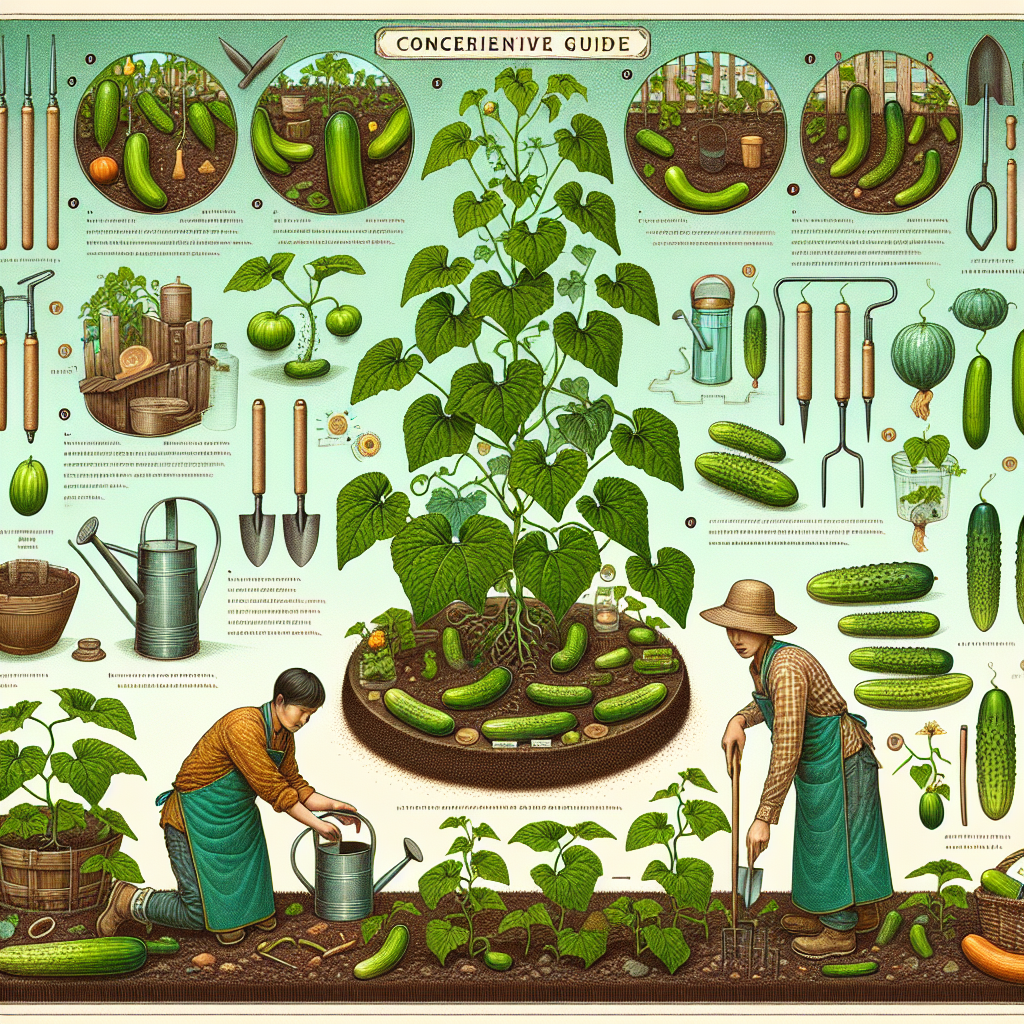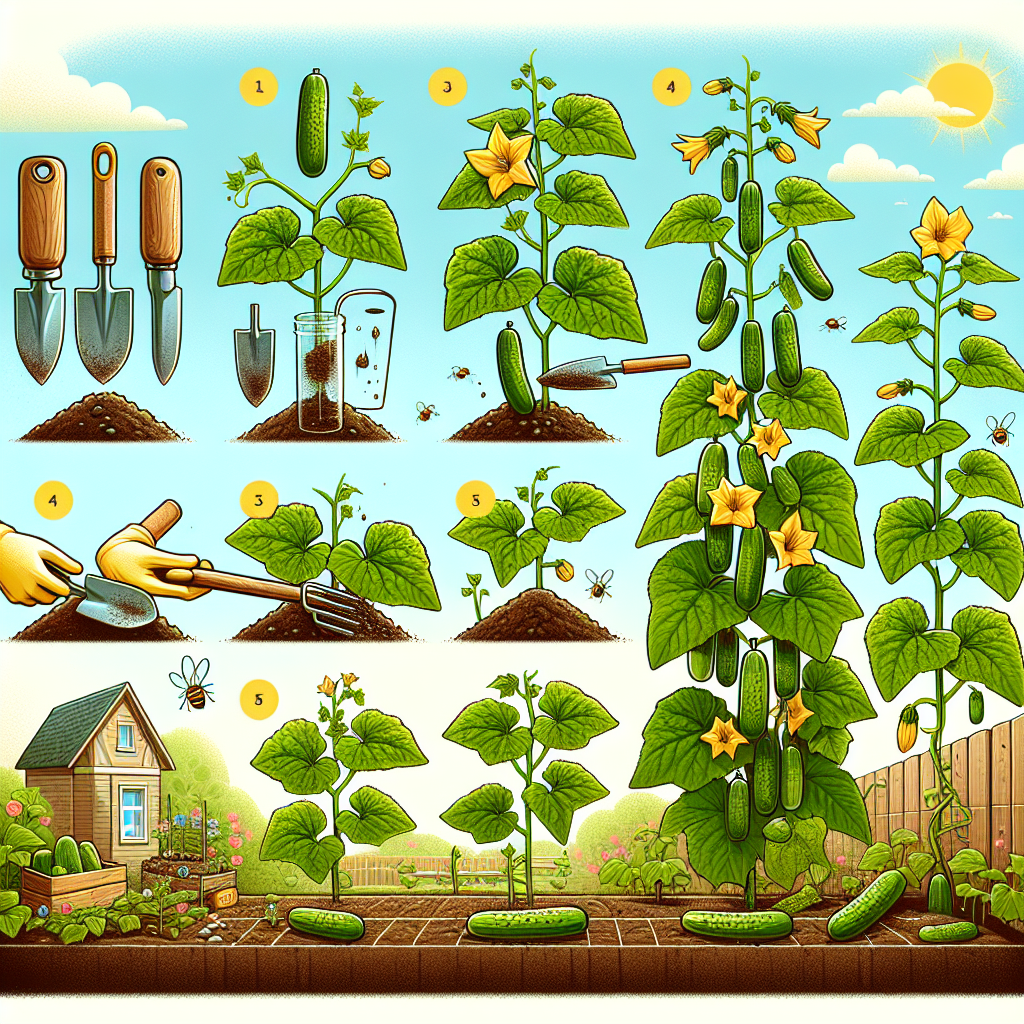A Comprehensive Guide to Growing Cucumbers in your Home Garden
Cucumbers are a popular and nutritious vegetable that can easily be grown in your home garden. Whether you have a large backyard or a small balcony, cucumbers can be cultivated in pots, containers, or directly in the ground. With their refreshing taste and versatility in various dishes, growing cucumbers at home is a rewarding experience. This comprehensive guide will provide you with all the information you need to successfully grow cucumbers in your home garden.
Choosing the Right Variety:
Before starting your cucumber journey, it’s important to choose the right variety for your specific needs. There are three main types of cucumbers: slicing, pickling, and specialty.
– Slicing cucumbers are typically eaten fresh and can be enjoyed in salads or used as a topping for sandwiches.
– Pickling cucumbers are smaller and have a crunchier texture. They are perfect for making homemade pickles.
– Specialty cucumbers come in various shapes and sizes, such as lemon cucumbers or Armenian cucumbers. These unique varieties add visual interest to any dish.
Depending on your preferences and available space, you can choose one or multiple cucumber varieties for your garden.
Preparing the Soil:
Cucumbers thrive in well-draining soil that is rich in organic matter. Start by clearing the area where you plan to plant your cucumber seeds or seedlings. Remove any weeds or debris from the soil surface.
Next, loosen the soil by turning it over with a garden fork or tiller. This will improve drainage and allow the cucumber roots to penetrate easily. Incorporate organic matter such as compost or well-rotted manure into the soil to enhance its fertility and moisture-holding capacity.
Sowing Seeds:
If you decide to start from seeds, sow them directly into the ground once all chances of frost have passed. Cucumber seeds can be planted in groups of 2-3 seeds, spaced about 12 to 18 inches apart. Create small planting holes and cover the seeds with a thin layer of soil, approximately half an inch deep.
Water the newly planted seeds gently but thoroughly, making sure the soil is evenly moist. Keep the soil consistently moist throughout the germination period, which typically takes 7-10 days.

Growing Conditions:
Cucumbers thrive in warm weather conditions with plenty of sunlight. Choose a location that receives at least 6-8 hours of direct sunlight each day. If you have limited space, consider growing cucumbers vertically using trellises or stakes to maximize sunlight exposure.
Watering is crucial for cucumber plants, as they have shallow roots and require consistent moisture. Ideally, provide at least an inch of water per week, either through rainfall or irrigation. Mulching around the cucumber plants can help retain soil moisture and suppress weed growth.
Fertilizing:
To ensure healthy growth and abundant harvests, it’s essential to feed your cucumber plants regularly. Start by incorporating a balanced organic fertilizer into the soil before planting. This will provide a slow-release source of nutrients as the plants grow.
Throughout the growing season, side-dress your cucumber plants with compost or well-balanced fertilizer every 3-4 weeks. Be cautious not to over-fertilize, as excessive nitrogen can lead to excessive foliage growth at the expense of fruit production.
Pest and Disease Management:
Cucumbers are susceptible to certain pests and diseases that can affect their health and productivity. Common pests include aphids, cucumber beetles, and spider mites. Regularly inspect your plants for any signs of infestation and take appropriate measures such as insecticidal soaps or natural predators like ladybugs.
Diseases such as powdery mildew and bacterial wilt are also common in cucumbers. To minimize disease incidence, ensure good air circulation around the plants by providing adequate spacing and pruning any excessive foliage. Choosing disease-resistant cucumber varieties can also help prevent or minimize disease outbreaks.
Harvesting:
Cucumbers are typically ready for harvest within 50-70 days, depending on the variety. Regularly check your plants for mature cucumbers by examining their size, color, and texture. The ideal size for harvesting slicing cucumbers is around 6-8 inches in length, while pickling cucumbers are best harvested at 2-4 inches.
To harvest cucumbers, use a sharp knife or shears to cut the fruit from the vine, being careful not to damage the plant. Harvesting regularly stimulates further fruit production and prevents overripe or overly large cucumbers that can impact flavor and tenderness.
In Conclusion:
Growing cucumbers in your home garden can be a rewarding experience that provides you with fresh and delicious produce. By following this comprehensive guide and providing the right growing conditions, you’ll be able to enjoy a bountiful cucumber harvest throughout the season. So roll up your sleeves, get your gardening tools ready, and embark on a cucumber-growing adventure that will bring joy to both your garden and your plate!













